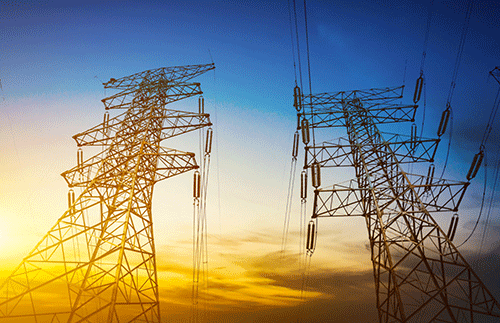The N$2 billion credit facility that Namibia recently secured from the World Bank consists of an inclusive package of loans and grants.
According to the national power utility, the loan package of US$138.5 million (N$2.6 billion) that was approved last week has “resulted in a blended competitive cost of funding”.
Responding to follow-up questions from this publication, a NamPower spokesperson elaborated on the loan, explaining that the repayment tenure is slated over 15 years, with a five-year grace period. Also, the utility will be making semi-annual repayments.
In a nutshell, the N$2 billion will be used to ensure the stability of the national electricity grid, and to facilitate the reliable flow of electricity.
The spokesperson added the funds will also be greatly beneficial in the transfer of electricity from future generation projects.
As such, the multi-billion-dollar loan will aid in the implementation of NamPower’s Transmission Expansion and Energy Storage (TEES) Project.
This project is structured around three components, namely the development of the second Auas-Kokerboom transmission line, the development of a utility-scale Battery Energy Storage System facility and technical assistance activities to support NamPower to develop bankable renewable energy projects, and enhance the socio-economic benefits of their projects.
NamPower has emphasised that the TEES project supports the development of a systematic socio-economic framework to support job-creation, skills development and female employment during the design and implementation of utility-led projects.
NamPower managing director Kahenge Haulofu welcomed the approval of the project, as this serves as a major milestone in the development of the approximately 465km line, which will run from Auas transmission station outside of Windhoek to the Kokerboom transmission station near Keetmanshoop.
The Auas-Kokerboom 400kV Transmission line will be the second 400kV line between these two substations, which serves to increase NamPower’s north-south transmission capacity.
The line will make use of the highly efficient 422 series of towers, utilising a compaction cross-delta conductor’s arrangement.
“This is one of the major strategic and crucial investments towards the Namibian electricity transmission network. Once completed, it will allow NamPower to maintain pace with the evolving and increasing electricity needs of the country. This transmission line will be key to unlocking increased access to Variable Renewable Energy within Namibia, as well as facilitating regional electricity trading. Further, our second utility-scale Battery Energy Storage System will be developed and integrated into our transmission network to support the development and uptake of renewable energy plants” said Haulofu.
The Battery Energy Storage System, which will form part of the TEES Project, will be connected to the Lithops Substation in the Erongo region. The envisaged size of the BESS will be 45MW/90MWh.
Lithops was chosen as the location for the project because it is situated close to a key load centre, which mainly consists of large mines.
“As such, the BESS can reduce inrush currents seen by the transformers when heavy mining equipment is operated,” Nampower stated.
The area surrounding Lithops is expected to be home to upcoming Solar Photovoltaic (PV) power plants with significant capacity.
With this in mind, the BESS can store any excess energy produced by these plants with minimal grid losses.
The expansion of the electricity network and lines is necessary to provide for the current and future national load requirements as the needs of an expanding Namibian population will require, including the needs of a growing economy.
This will include not only an increase in capacity but it will also redundant capacity within the transmission system to ensure the security of supply due to unforeseen circumstances.
World Bank country director for Namibia Satu Kahkonen said: “Namibia is a uniquely positioned regional leader in the transition towards a greener and more sustainable future. The World Bank is delighted to support Namibia’s commitment to expand domestic energy generation with renewable solutions consistent with the country’s Second Harambee Prosperity Plan. This project will support the NamPower to develop future renewable energy projects”.
Namibia’s National Energy Policy and the Renewable Energy Policy are targeting to achieve 85% self-sufficiency and source 70% of its energy needs from renewable energy sources in future.


